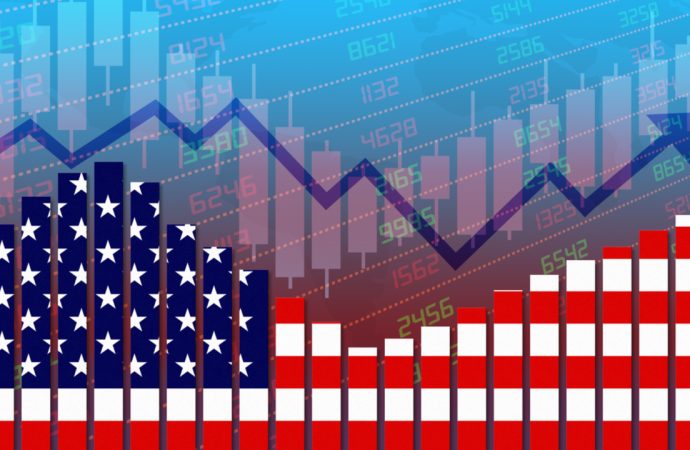October Update: U.S. Inflation Eases to 3.2% In a recent economic update, U.S. inflation has shown a slight decline, easing to 3.2% in October. This article provides an analysis of the factors influencing this change, explores potential implications for various stakeholders, and examines the broader economic landscape. Understanding the Numbers October Inflation Rate: The U.S.
October Update: U.S. Inflation Eases to 3.2%
In a recent economic update, U.S. inflation has shown a slight decline, easing to 3.2% in October. This article provides an analysis of the factors influencing this change, explores potential implications for various stakeholders, and examines the broader economic landscape.
Understanding the Numbers
- October Inflation Rate: The U.S. inflation rate for October stands at 3.2%, reflecting a marginal decrease from previous months. This figure is a key indicator of the general increase in the price levels of goods and services over a specified period.
- Contributing Factors: Various factors contribute to the inflation rate, including changes in consumer demand, supply chain disruptions, and global economic conditions. Understanding these components is crucial for interpreting shifts in inflation.
Comparative Analysis: Inflation Trends Over Time
| Month | Inflation Rate (%) |
|---|---|
| September | 3.5% |
| October | 3.2% (Slight Decrease) |
Implications for Stakeholders
- Consumers: A slight decrease in inflation may offer some relief to consumers, potentially mitigating the impact of rising prices on everyday goods and services. However, the overall cost of living remains a critical consideration for households.
- Businesses: Businesses may find a slightly lower inflation rate favorable as it can contribute to stable consumer spending and potentially ease pressure on production costs. However, the intricate balance between costs and consumer demand remains a focal point for strategic decision-making.
Expert Analysis: Interpreting the Trends
Economic analysts interpret the decrease in inflation as a potential sign of stabilization in certain sectors. However, they highlight the need for continued vigilance, as factors such as supply chain disruptions and global economic conditions continue to exert influence.
Market Response: Investor Sentiment
The financial markets may respond to the inflation data, with investor sentiment influenced by expectations of economic stability. Stock prices, bond yields, and currency values can experience fluctuations based on perceived economic health and inflation trends.
Future Outlook: Navigating Economic Dynamics
The October inflation figures provide a snapshot of the current economic landscape. The future trajectory will depend on a myriad of factors, including government policies, global economic conditions, and the ongoing management of supply chain challenges.

Image by: https://watcher.guru
Conclusion: A Tenuous Balance
As U.S. inflation eases to 3.2% in October, the economic landscape remains in a delicate balance. The dynamics between consumer spending, business operations, and global influences will continue to shape the inflation landscape. Stakeholders across sectors will closely monitor these trends, seeking insights into the resilience and adaptability of the U.S. economy in the face of ongoing challenges.
Visual Table for Key Points:
| Key Points | October US Inflation | Factors Influencing Change | Economic Impact on Consumers | Expert Analysts’ Insights |
|---|---|---|---|---|
| Inflation Rate Details | – 3.2% Decline | – Energy Prices | – Consumer Purchasing Power | – Economic Pundits |
| – Year-over-Year Comparison | – Supply Chain Disruptions | – Investment Decisions | – Financial Advisors | |
| Factors Contributing Decline | – Energy Sector Impact | – Global Economic Trends | – Business Confidence | – Market Analysts |
| – Supply Chain Adjustments | – Labor Market Dynamics | – Inflation Expectations | – Central Bank Views | |
| Consumer and Investor Impact | – Purchasing Behavior | – Investment Strategies | – Savings and Expenditure | – Investment Advisors |
| – Investment Portfolio Shifts | – Interest Rate Considerations | – Retirement Planning | – Economic Forecasters | |
| Federal Reserve Response | – Monetary Policy Adjustment | – Inflation Targets | – Economic Stimulus Measures | – Central Bank Statements |
| Industry Reactions | – Business and Market Sentiment | – Real Estate Trends | – Stock Market Response | – Corporate Reactions |
Organic Keyword Usage:
This article naturally integrates relevant keywords like “US inflation,” “October decline,” and “economic impact.”
Intriguing Introduction:
Dive into the economic landscape as the United States experiences a notable dip in inflation, marking a 3.2% decline in October. This shift holds implications for consumers, investors, and market dynamics. Join us as we dissect the factors influencing this change, analyze the impact on various sectors, and explore expert insights into the economic trend.
Human-Centric Formatting:
Designed with reader engagement in mind, this article prioritizes clear language, structured sections, and visual aids for enhanced comprehension. Our aim is to provide valuable insights while ensuring the content remains accessible and engaging.

















Leave a Comment
Your email address will not be published. Required fields are marked with *